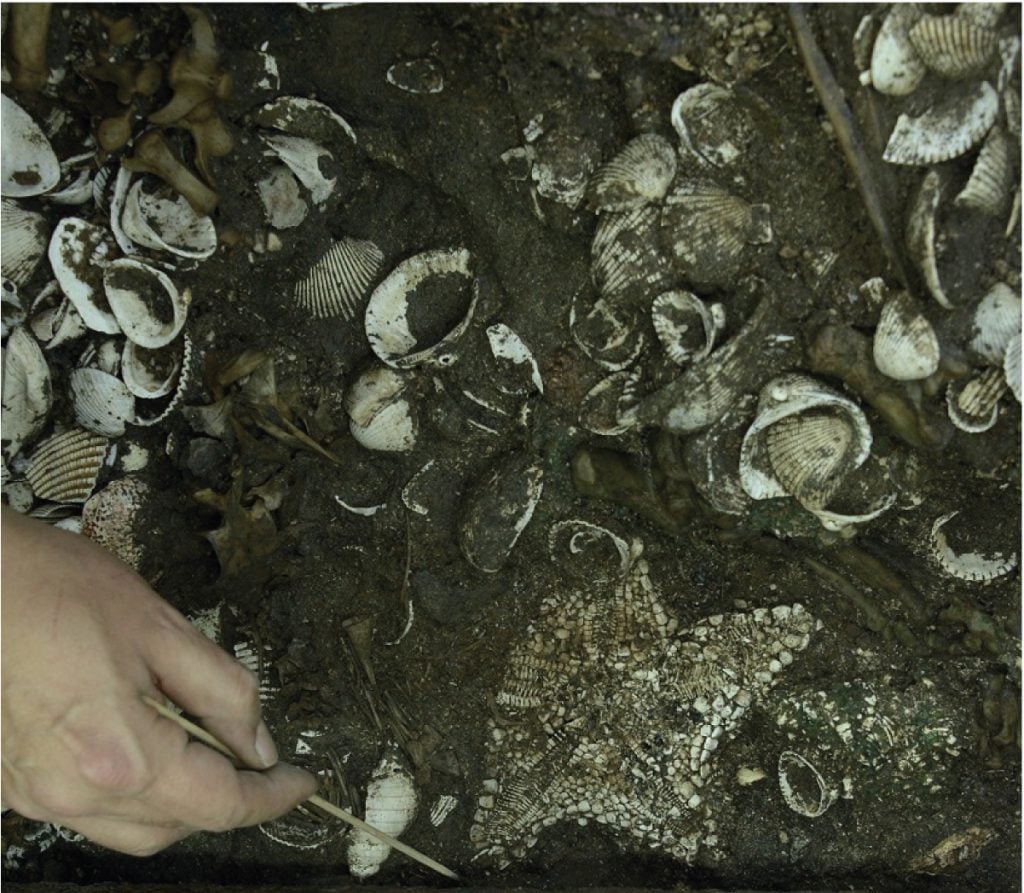Archaeology & History
Archaeologists Have Uncovered a Stunning Aztec Offering to Their God of War: Over 160 Starfish and a Jaguar Skeleton
The artifacts were discovered at Templo Mayor, the primary temple of the Aztecs in what is now Mexico City.

The artifacts were discovered at Templo Mayor, the primary temple of the Aztecs in what is now Mexico City.

Artnet News

In a major discovery, archaeologists in Mexico have excavated a 500-year-old Aztec offering filled with over 160 starfish and the skeleton of a jaguar with a spear in its claw.
The discovery, made late last year and announced this month by Mexico’s National Institute of Anthropology (INAH), came at the Templo Mayor, the primary temple of the Mexica people in the capital of Tenochtitlán in what is now Mexico City. Erected in the 1300s, the 90-foot-tall structure was the site of momentous Aztec rituals and ceremonies.
The objects were found in the Cuauhxicalco section of the temple, suggesting that they were placed there around A.D. 1500—a period of time marked by the transition between the reigns of Aztec rulers Ahuízotl and Moctezuma Xocoyotzin.
Although starfish have been uncovered at the site before, this offering is the largest collection found to date. One example, among the earliest placed in the offering, was even found completely intact—the result, experts believe, of being pushed, by the weight above it, below a level of fiber. The creatures belong to a species called Nidorellia armata, often called chocolate-chip starfish because of their sandy coloring and raised black spots.
The dig’s lead archaeologist, Miguel Báez Pérez, explained that the Aztecs often brought sea creatures from hundreds of miles away as a gesture to the gods.
“A good part of the Mesoamerican peoples believed that the origin of the world was linked to the sea; therefore, marine organisms were treated as relics,” Báez Pérez said in a statement. “In the case of the Mexicas, their military power allowed them to bring thousands of marine objects and recreate an entire aquatic environment in Tenochtitlán itself.”
Arqueólogos del INAH anunciaron el hallazgo del depósito de estrellas de mar más grande que se ha encontrado hasta ahora en el Templo Mayor de la Ciudad de México.
Conoce más: ? https://t.co/HzeB6aXfs1 pic.twitter.com/pe6NAgaZIS
— INAHmx (@INAHmx) March 14, 2022
Experts suspect that the collection of items in the discovery—which also includes animal bones, insect remains, and pieces of coral—were offered up to Huītzilōpōchtli, the Aztec god of war, a theory that accounts for the spear and the jaguar as well. Báez Pérez noted that more research into the provenance of the items will likely reveal more about their significance.
“This offering is one of the largest that we have found in the Templo Mayor, so until we explore the 30 or 40 centimeters of depth that we believe we are missing, it is difficult to know its meaning,” the archaeologist said.
The starfish and other objects will remain in place at the Templo Mayor until the archaeologists can identify a way to remove them in such a way that preserves the offering’s shape, at which point they’ll be transported to a laboratory for further study.
Báez Pérez told the INAH, “It’s very interesting because, if you think of it, the pattern on the starfish looks very similar to the pelt of a jaguar.”